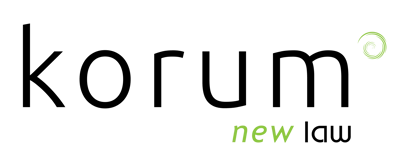GC Spotlight: Sarita Misir Fullerton Healthcare..

In this insightful GC Spotlight, Sarita shares her thoughts on what it takes to be a modern GC and also how ensuring team wellbeing is on the top of her priority list. Let's jump in!
1. Hi Sarita, tell us a little about yourself! What does it mean to you to be a modern GC?
I started out as a commercial litigator for almost 2 years before moving into the corporate transactional world at Duane Morris & Selvam, the Singapore Joint Law Venture firm of US Am Law 100 firm Duane Morris, where I also became the firm’s youngest partner.
After being in private practice for 8 years, I moved in-house in 2017 to Fullerton Health and have been here for the past 4 years, leading our global M&A, capital markets and healthcare tech legal work. I also manage strategy for our complex disputes and investigations.
The modern GC is someone who’s irreversibly evolved into a true business, operational and strategic advisory partner. By demonstrating a high level of resilience, adaptability and flexibility through facing and navigating uncertainty head-on and being able to pivot quickly and efficiently, the modern GC is very often better positioned to advise on wider business-related issues, and their value particularly shines through when they support their organisation with strategic planning for business survival and growth, and even social responsibility.
2. What have been your biggest challenges during the pandemic?
Definitely preventing team overload and burnout. It’s inescapable that the pandemic has applied even more “pressure cooker” stress on legal teams to demonstrate “more with less”, with limited budgets but increasing workloads and need to add further value to the organisation.
3. What are your key priorities for the year ahead?
I have 2 key priorities for 2022. First, supporting the health and wellbeing of my team. The pandemic has caused a lot of rumination about managing work and life priorities. Employees are increasingly seeking autonomy, purpose and learning. Agile working practices, where leaders empower and trust their people to achieve results no matter where and when they’re working, are fast becoming a baseline way to increase employee health and wellbeing.
Beyond that, leaders themselves need to evolve into mentors who don’t just look at their people as “resources”, but who instead understand and get to know them as individual human beings with their own hopes, wishes and dreams, whether career-related or personal. Organisations and leaders who insist on going back to the increasing defunct and extinct “old ways” of doing things will find themselves on the wrong side of the “Great Resignation”.
Second, creating a culture of diversity, equity and inclusion (DEI). This is also related to my first priority above, since DEI relates to everyone’s fundamental right to health, safety and dignity, and thus wellbeing. We want our workforce to better represent the broader communities we serve and operate in. We must make it a high strategic priority to treat all employees equitably and to create conditions where everyone feels welcomed and included.
Every GC needs to surround themselves with talented and smart people that they can rely on. But you cannot attract and retain good people when they don’t feel welcomed and included, or when they perceive opportunities to be unfairly weighted against them. These are systemic issues that involve changing culture and ingrained norms in organisations. It is hard and difficult work, but real progress requires sustained commitment.
4. What do you think about the use of LegalTech, data analytics and process optimisation to improve your legal department's value (e.g., data relating to contracts, risk, tracking workflows, performance metrics, costs)
Absolutely essential. I already mentioned the “doing more with less” pressure that legal teams are facing and will continue to face for the foreseeable future. Part of the reason lies in the difficulty in showing tangible metrics for value-creation or revenue-generation by legal teams, since we aren’t generally fee-earners like in private practice.
Data and analytics have the power to change that by measuring value and outcomes, which helps to build a business case to increase budgets to grow the team and also invest in more LegalTech – which then helps to make workloads more manageable by letting my lawyers focus on the business strategic work that matters more crucially to the business, while automating or optimising the more administrative or repetitive, but time-consuming, tasks like legal operations.
Beyond the usual LegalTech tools, technology can also drive efficiency in regulatory and compliance work, an ever-increasing area for legal and compliance teams in today’s world. Technology has the capacity to monitor for those threats that might impact compliance at a strategic level, such as the introduction of new legislation, or financial or operational pressures, and assist legal and compliance teams in developing a deeper understanding of the impact of compliance topics on the business. This again goes back to my earlier point about helping my team focus on the more strategic work that drives revenues and business growth.
5. What developments or trends do you expect to see in the legal services industry in the next 5 years?
Expansion of digital ecosystems and associated risk mitigation. As organisations embrace new digital working practices and remote working, new digital risks and vulnerabilities are introduced, such as cybersecurity and data privacy challenges that impact operations, finances and reputation.
The ability to demonstrate satisfactory data privacy and cybersecurity measures has become a growing focus of transactional and M&A due diligence. Being proactive in managing cybersecurity and data privacy risks and breach readiness is increasingly viewed as a business opportunity (besides being a business imperative).
The other trend is the increasing focus on sustainability and ESG. These were previously considered to be risks to be managed reactively, but more organisations are now proactively identifying new ESG-related business opportunities, resulting in ESG fast-becoming a strategic opportunity to be seized instead.
6. Where do you see NewLaw/ALSPs fitting into the matrix of your legal department?
Going back to my earlier point on budget constraints for legal teams, NewLaw and ALSPs are uniquely positioned to complement the modern GC’s team by coming on-board quickly to provide targeted, specific legal assistance during major projects or certain peak periods in a more budget-friendly manner. Importantly, this allows the needs of the business to be serviced efficiently without loss of productivity or unnecessary delay, which bolsters the value of the legal team in the organisation, without my lawyers being overloaded.
In my role, I’ve worked with several consultants from ALSPs, for both project-specific work and general contract work. Since the engagements last several months, the consultants get to understand our business and develop some institutional knowledge, which benefits us whenever we need to call upon them again, since they can “hit the ground running”. In fact, this sometimes even ends up as an extended “probationary period” of sorts for both sides to see if they want to make the arrangement more permanent. For example, we’ve made an offer before for a particular consultant who we felt would be a great member of the legal team.
KorumLegal
Dec 18, 2021
Related Posts.
By: KorumLegal
GC Spotlight: Lorraine Lee on mental resilience.
This month, we speak to the fantastic Lorraine Lee. She is the General Counsel and the Chief Privacy Officer, Asia & Oceania, at International SOS - a health and security services firm. A General..
By: KorumLegal
GC Spotlight: Dan Ryan, General Counsel, Everledger
On our GC Spotlight this time is Dan Ryan! He is the General Counsel at Everledger, a digital transparency company - providing technology solutions to increase transparency in global supply chains...
